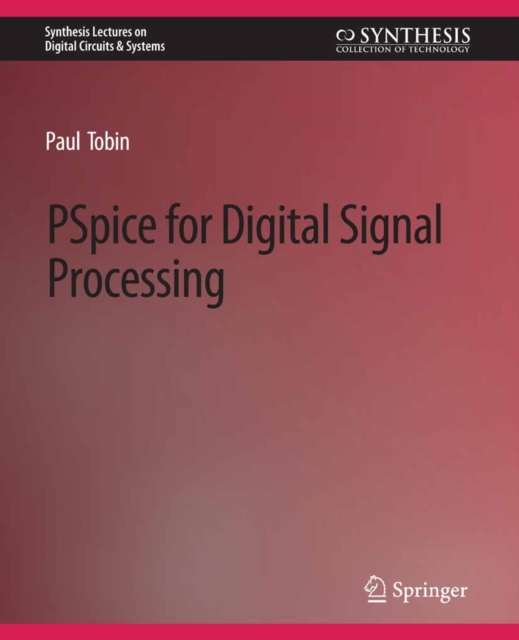
PSpice for Digital Signal Processing PDF
by Paul Tobin
Part of the Synthesis Lectures on Digital Circuits & Systems series
Description
PSpice for Digital Signal Processing is the last in a series of five books using Cadence Orcad PSpice version 10.5 and introduces a very novel approach to learning digital signal processing (DSP).
DSP is traditionally taught using Matlab/Simulink software but has some inherent weaknesses for students particularly at the introductory level.
The 'plug in variables and play' nature of these software packages can lure the student into thinking they possess an understanding they don't actually have because these systems produce results quicklywithout revealing what is going on.
However, it must be said that, for advanced level work Matlab/Simulink really excel.
In this book we start by examining basic signals starting with sampled signals and dealing with the concept of digital frequency.
The delay part, which is the heart of DSP, is explained and applied initially to simple FIR and IIR filters.
We examine linear time invariant systems starting with the difference equation and applying thez-transform to produce a range of filter type i.e. low-pass, high-pass and bandpass. The important concept of convolution is examined and here we demonstrate the usefulness of the 'log' command in Probe for giving the correct display to demonstrate the 'flip n slip' method.
Digital oscillators, including quadrature carrier generation, are then examined.
Several filter design methods are considered and include the bilinear transform, impulse invariant, and window techniques.
Included also is a treatment of the raised-cosine family of filters.
A range of DSP applications are then considered and include the Hilbert transform, single sideband modulator using the Hilbert transform and quad oscillators, integrators and differentiators.
Decimation and interpolation are simulated to demonstrate the usefulness of the multi-sampling environment.
Decimation is also applied in a treatment on digital receivers.
Lastly, we look at some musical applications for DSP such as reverberation/echo using real-world signals imported into PSpice using the program Wav2Ascii.
The zero-forcing equalizer is dealt with in a simplistic manner and illustrates the effectiveness of equalizing signals in a receiver after transmission.
Information
-
Download - Immediately Available
- Format:PDF
- Publisher:Springer International Publishing
- Publication Date:31/05/2022
- Category:
- ISBN:9783031797675
Other Formats
- Paperback / softback from £40.95
Information
-
Download - Immediately Available
- Format:PDF
- Publisher:Springer International Publishing
- Publication Date:31/05/2022
- Category:
- ISBN:9783031797675










